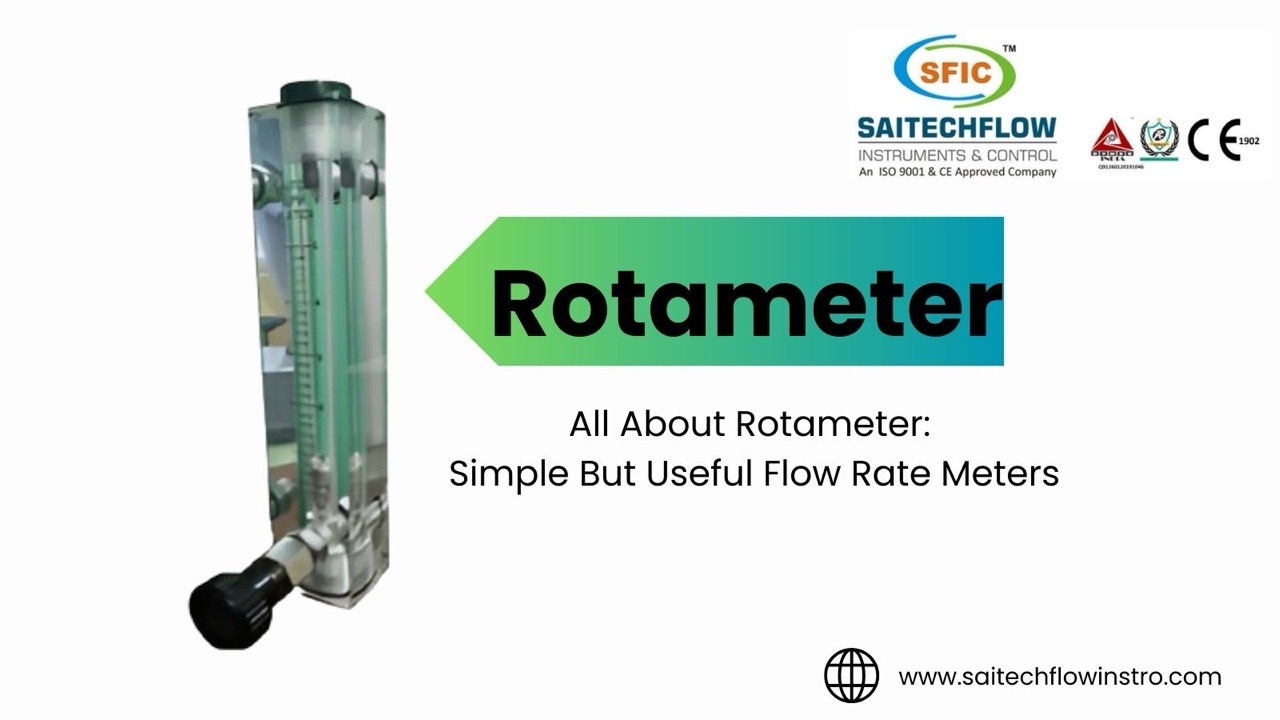All About Rotameter: Simple But Useful Flow Rate Meters

The world of industrial processes relies heavily on precise measurement. One key measurement is flow rate, which tells you how much fluid (liquid or gas) is moving through a system at a given time. A popular tool for this task is the rotameter, a simple but effective device that's been around for a long time.
In this blog, we'll dive into the world of rotameters, exploring what they are, how they work, their applications, and some things to consider when using them.
What is a Rotameter?
A rotameter, also known as a variable area flow meter, is a device that measures the volumetric flow rate of a fluid. It consists of a tapered tube with a freely moving float inside. The fluid flows upwards through the tapered tube, and the force of the flow pushes the float up. The position of the float within the tube corresponds to the flow rate, which can be read from a scale marked on the side of the tube.
How Does a Rotameter Work?
The working principle of a rotameter is based on the balance of forces acting on the float. Here's a breakdown:
1. Gravity: The float is constantly pulled down by gravity.
2. Drag Force: As the fluid flows upwards, it exerts a drag force on the float, pushing it up.
3. Equilibrium: At a certain flow rate, the drag force balances the gravitational pull, causing the float to reach a specific position in the tapered tube.
The wider the cross-sectional area around the float (due to the tapered tube), the higher the flow rate required to achieve equilibrium and lift the float to that position. By reading the scale at the point where the float stabilizes, you can determine the flow rate.
Applications of Rotameters:
Rotameters are popular due to their simplicity, affordability, and ease of use. They are commonly used in various applications, including:
- Monitoring flow rates of liquids and gases in industrial processes
- Regulating and measuring gas flow in medical applications
- Monitoring water flow rates in irrigation systems
- Measuring coolant flow in machines
- Science labs for experiments
Advantages and Limitations of Rotameters:
Advantages:
- Simple and easy to use
- Relatively inexpensive
- Reliable and low maintenance
- Visually indicates flow rate
- Can be used for various liquids and gases (with appropriate materials)
Limitations:
- Not as accurate as some other flow meter types
- Accuracy can be affected by changes in fluid viscosity, density, or temperature
- Limited flow rate range
- Requires vertical installation
Conclusion
Rotameters are a valuable tool for measuring flow rates in various applications. They offer a simple, cost-effective solution for many industrial and scientific needs. However, it's important to understand their limitations and choose the right type of rotameter for the specific fluid and desired accuracy.
For More Details Visit us for Saitechflow Instruments & Control



